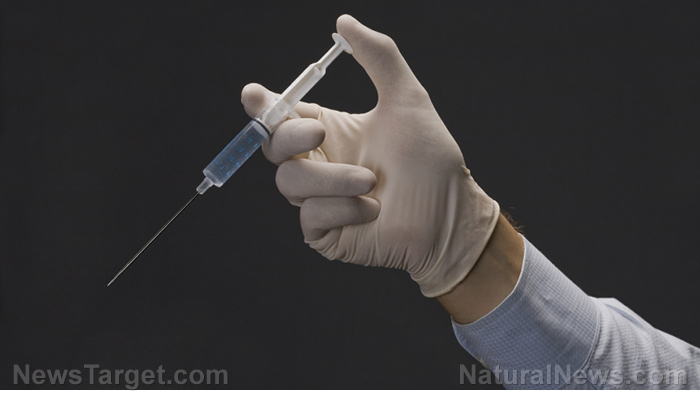
Baltimore drug epidemic rages on as city health officials run low on naloxone
Thursday, June 22, 2017 by Bridgette Wilcox
http://www.zombie.news/2017-06-22-baltimores-heroin-epidemic-is-bad-they-are-running-out-of-naloxone-the-opioid-overdose-reversal-drug.html

Baltimore’s supply of the opioid overdose reversal drug naloxone is running low, leaving the Maryland city to sink even deeper into a drug epidemic that has been raging for decades.
City health officials have only about 4,000 doses of the drug left — a supply meant to last until May next year, BaltimoreSun.com reported. The remaining naloxone doses are now being rationed, given out two at a time to residents, especially drug users and those who live in areas where the incidence of overdose is high. The idea is to equip bystanders to be first responders when an overdose occurs.
According to the National Institute on Drug Abuse, naloxone restores normal breathing in those who have overdosed on opioids. It can be administered by friends, family, and bystanders to anyone in need through an injection or nasal spray.
The city’s low supply of naloxone is especially troubling considering that the city received 1,945 naloxone claims in the first three months of 2017 and has about 21,000 active heroin users.
Naloxone is available in retail pharmacies, albeit at great cost for those without insurance coverage who are charged $45 for a shot and $110 for a nasal spray in CVS. These prices considered, the drug is hardly affordable to those who are most at risk of an overdose, many of whom are part of Baltimore’s low-income bracket.
Understandably, Baltimore’s emergency responders, particularly firemen and paramedics, have the biggest supply of naloxone in the city, and have been instructed to administer the drug to any patient who is not breathing, in case the problem may have been caused by an opioid overdose. The Baltimore Fire Department orders 18,750 units of naloxone annually, an amount costing about $675,000.
Baltimore city health commissioner Leana Wen has written to the Maryland state health department, requesting for a portion of the $10 million fund that the state received from the recently passed 21st Century Care Act.
“We need funds now,” Wen was quoted as saying in the BaltimoreSun.com article. “It seems unconscionable at a time of public health emergency, when there is an antidote readily available and can save lives, that we have to ration.”
‘Heroin Capital’ of the United States
The city has had a long drawn-out struggle with drugs, leading many to consider it the ‘”Heroin Capital” of the country. With a population of 645,000, there are an estimated 60,000 drug addicts — majority of whom are taking heroin, abcnews.go.com reported. The city’s heroin use is historical, dating all the way back to the 1950s.
The heroin available in Baltimore is stronger than those available in other parts of the country. This may be because the city was a crucial distribution point for South American heroin in the mid-90s. This particular heroin, which is smuggled from Colombia, has a higher degree of purity, making it more potent and consequently more addictive than other brands.
The drug, also called dope, smack, or skunk, is commonly heated up and injected into the system with needles. It can also be snorted or smoked, which some users misleadingly think is safer. The street price of the opioid ranges from $100 to $120 per gram — making the drug disturbingly affordable, since a heroin hit can be had on as little as 5 to 10 mg.
The drug problem has run many lives to the ground, with recovering addicts sharing their struggles with drug abuse. One woman who is undergoing treatment shared in the report that she was training to be a ballerina at the prestigious Peabody Institute, but turned to dancing at strip clubs instead to fund her addiction.
Another recovering addict said that she resorted to crimes to be able to afford the drug, which set her back $50 a day. Another former user, only 18 years old, shared that he experienced suicidal thoughts resulting from abuse of the drug.
These people are only some among the thousands of Baltimore residents who have been caught up in the drug problem that has engulfed the city for much too long.
Sources include:





